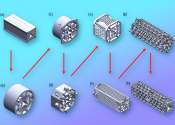Researchers 3D print components for a portable mass spectrometer
Mass spectrometers, devices that identify chemical substances, are widely used in applications like crime scene analysis, toxicology testing, and geological surveying. But these machines are bulky, expensive, and easy to ...
Jan 4, 2024
0
138









